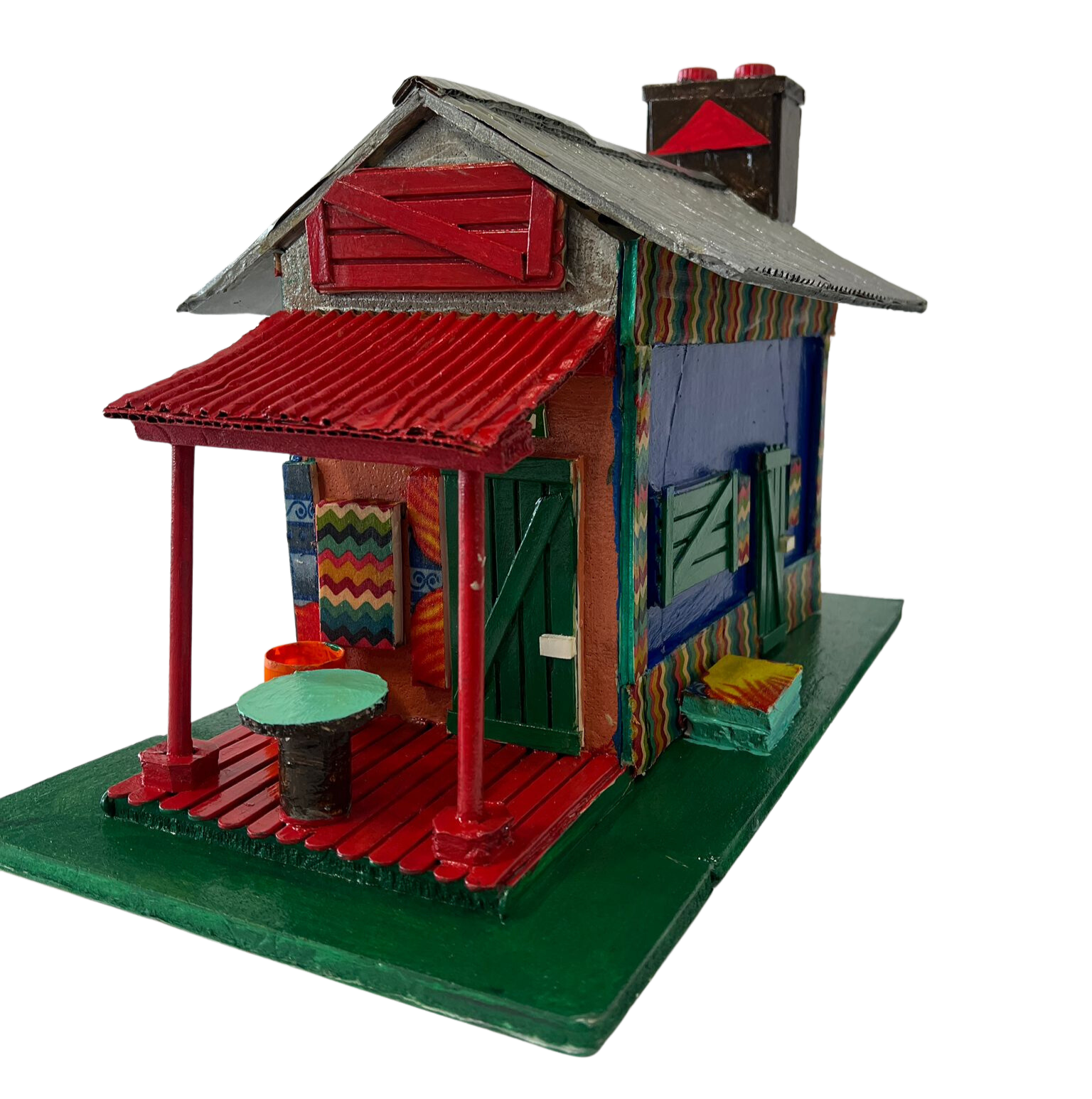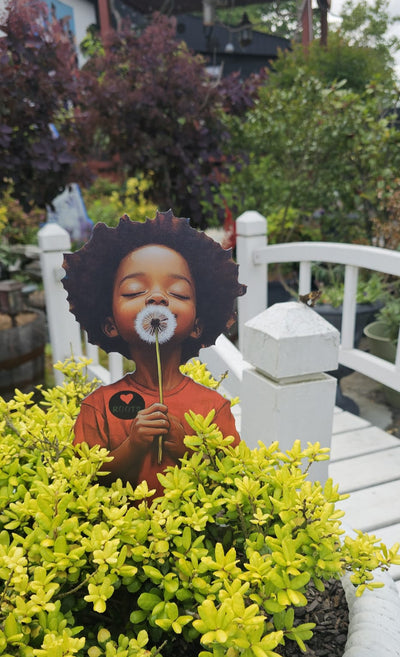Assemblage: Surpassing the Original Intent
Assemblage: Surpassing the Original Intent
According to MoMA, assemblage is a three-dimensional artwork made of found objects or non-traditional materials. Assemblage made its appearance in European museums in 1912 when Pablo Picasso created Still Life, a three-dimensional cubist construction made of scraps of wood and tablecloth fringe. But the term wasn’t coined until 1953 by Jean Dubuffet to describe his own collages created that year. Assemblage has been a favorite style for Black folk artists Thornton Dial and Lonnie Holley. But trained African American fine artists also employ assemblage in their work. Assemblage is typically a sustainable practice that repurposes discarded items into artworks. The practice challenges commercialization and the gallery system by mystifying the worth of artworks. Contemporary artists have gravitated toward this practice it seems because the flat surface of the canvas is not enough to hold all of what they have to say. The beauty of assemblage is in the melding of ideas from one disparate object to another. When objects come together, so do ideas. As we will see, artists can conjure long-held controversial ideals when they dare to combine objects that seem drastically different.

When artists bring materials together, they allow the viewers to deconstruct meaning from the artwork. Placing unrelated items adjacent to one another forms significance that might not be evident without the placement of those objects in three-dimensional space. In the case of Betye Saar’s The Liberation of Aunt Jemima, she associates three very important objects: Aunt Jemima, a broom, and a rifle. Saar’s narrative counters the dominant narrative of the smiling Aunt Jemima who lived to serve white people. The idea that a mammie prefers to take care of white families rather than her own has been the narrative for many Black women with no other choice of employment but domestic service for generations. That a mammie would carry a rifle in defense of herself is an idea that might not have been achieved if these three found objects were not married with assemblage. Though they could have been painted, the assemblage of the objects and the three dimensionality lends a sort of reality to them, like they could actually exist. The title signifies that the mammie holds the rifle in defense of herself. The liberation of Aunt Jemima is a radical stance because she’s taking back her dignity. To be freed from the confines of someone else’s kitchen means that now she has the power to tend to her own. And there’s so much more power in that.

"Hurricane Season" Larry H. Dorsey - View more works by this artist
Thornton Dial’s Strange Fruit: Channel 42 depicts a man hanging from a television antenna. The reference to strange fruit is popularly known from the song sung by Billie Holiday and Nina Simone referencing the lynchings of Black people happening in the South. In 1959, when Billie Holiday recorded “Strange Fruit,” Black people were being lynched to much fanfare. There would be picnics and people would take photographs and make postcards. Without making the artwork look like a celebration, Dial uses the spray can tops to “decorate” the scene. While the artwork is pretty accurate in its depiction of a lynching of an almost life-sized representation of a man, the choice to hang him from a television antenna is interesting. Though Dial made this piece in 2003, its relevance today is striking. Although he isn’t alive to see the Black Lives Matter uprisings, and they are happening on social media and not television, this piece still speaks to the meaning that Black lives are being lynched publicly, as they have always been. Dial’s choice of hanging a representation of a man from an antenna really speaks to the generations of men that have been terrorized by lynchings but especially by the spectacle that surrounded them. Dial lived through the most troubling times as a man in the South. Born in 1928, in Emelle, Alabama, he knew all too well the trauma that lynchings caused the black community.

Noah Purifoy’s No Contest (bicycles) is an outstanding work that resides at The Noah Purifoy Desert Art Museum of Assemblage Sculpture in Joshua Tree California. No Contest is a clever work that might allude to the state of affairs for Black people in America. There are several ways to look at this work. On the top of a house-like structure, sits a seesaw or a scale with one bicycle upside down and the other right side up. The seesaw or scale is weighed more heavily on the side with the bicycle that is upside down. In the United States, African Americans, who might be represented as the upside-down bicycle, started out life with less than nothing and have had to work three times as hard to be equal. The right side up bicycle might represent white people. The artwork reflects that the right side of the scale or the black side elevates the left or the white side. Though black people had less to begin with they have surpassed their original intent. The artwork might allude to the idea that the scales are weighing heavily on the black side. The bikes, made for mobility, although alike, are different. One is elevated and the other is upside down and lowered, as are white people and black people in this country. With his provocative use of found materials, Purifoy crafts a powerful narrative of inequality, one delicately balanced by symbolic meaning. He speaks of struggle while also depicting the resilience of a people.
Lonnie Holley’s African Mask harkens back to African ancestry but incorporates very real African American realities. African masks are typically used in rituals or ceremonies. Here Holley places a welder’s mask in the center of a ring of feathered out tires, showing us the ritual of the industrious blue collar African American man in ceremony. The mask could be associated with men around the country who work on cars, professionally or not; it could be related to those who work on cars for monetary gain or those who work on cars because they or their family members need to maintain used cars to survive. The electrical outlet and electrical cords extend the usage of Holley’s mask to other men who might be blue collar workers. Masks in African cultures were and are still used in ceremonies for ensuring good harvests, burying the dead, and initiation rituals. Holley’s mask might be useful in the African American man’s symbolic initiation into manhood because, for many men, their manhood is dependent on knowing their way around electrical sockets or car engines. The value of any of the found objects in this piece is elevated. Though a tire, welders mask, and electrical socket have their values, their values pale in comparison to the meaning that Holley has placed on them. They symbolize the ritual that so many men (and some women) engage in that sustains their families and communities. That is the role of the African Mask. The mask is worn in ceremonies to sustain the community.
Assemblage allows for narratives to be told. Collecting disparate objects and placing them together creates new meaning. A broom and a rifle, an electrical socket and a tire. The objects these artists have chosen to place together tell the stories of African American life. They tell the stories of African American resistance. They tell the stories of African American resilience. But the stories would not be possible without the imagination that allowed them to see past what some people see and discard as junk. These artists give new life and meaning to otherwise abandoned objects. And when these objects breathe new life, they are able to tell stories of an abandoned and discarded people, a people who had been tossed away. The narratives about African American lives are effectively told through found objects as the artists rescue these objects from their abandoned states to see the value in them, much in the same way African Americans have had to be reborn from a destitute state of existence. In reclaiming the found object, its original intent is not restored; it is elevated to an even higher level. More meaning is applied to the object.
Sign up for our free email course on how to begin your collection.
Would you buy stock in BAIA if you could? Well we invite you to join us in becoming a monthly supporter, starting at just $3 a month YOU become a stakeholder and begin to help us transform lives through art. We are growing the BAIA team and will use your contributions to hire more team members for the purpose of creating more educational and marketing resources for schools and universities about African American artists both past and present. Such art initiatives and educational programming like Blacklite with Steve Prince, Relating to Art with Dr. Kelli Morgan, and BAIA BITS would not be possible without the ongoing support of our Patreon members. Please consider becoming a monthly Patreon member today!
Review our list of rewards for becoming a BAIA Patreon / patron supporter. Your monthly contribution has lasting benefits. — “What will your legacy be” – Dr. Margaret Burroughs























